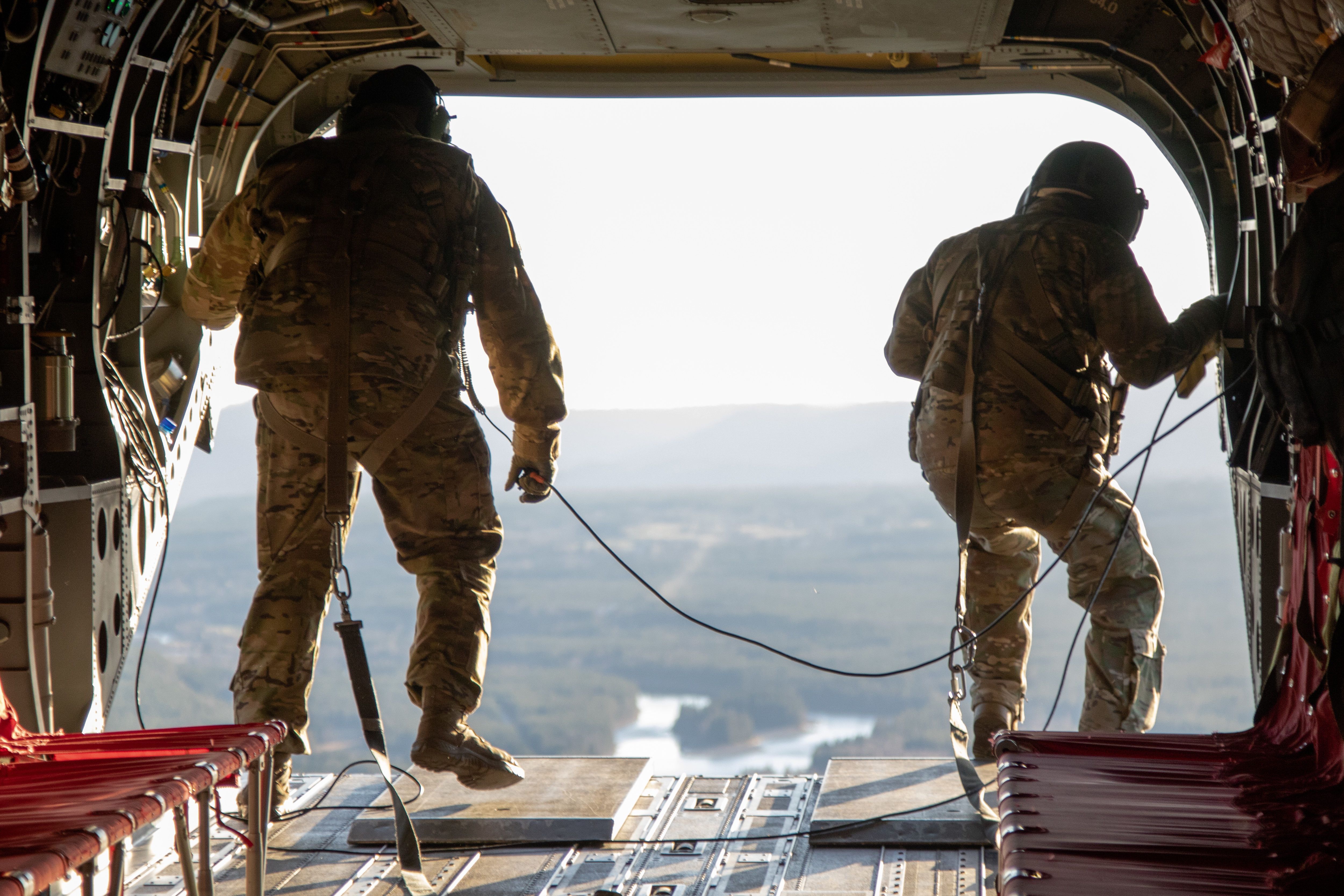Evolution of NATO Cooperation with Its Partners: Opportunities and Challenges

Practical and Political Dimension of Partnerships
While NATO’s main mission under the Washington Treaty is collective defence, the 2010 Strategic Concept gives the Alliance two additional missions: crisis response and cooperative security. The Alliance’s ability to fulfil its missions is supported by an extensive network of partnerships. Over three decades, NATO has developed partnerships with 40 countries from Europe, the South Caucasus, Central Asia, the Mediterranean, and the Persian Gulf, along with what it calls global partners. NATO offers these partners participation in about 1,500 projects in almost 40 areas, including military education, consultation, and exercises. Such a diverse offer makes it possible to adjust cooperation to the individual needs of the partner countries and the security interests of the Alliance. Partnerships enable developing the ability of the armed forces to act together (interoperability) and strengthening various dimensions of security, for example, through crisis-response missions, protection of marine communication routes, combating terrorism, or fighting threats in cyberspace and the proliferation of weapons of mass destruction. They also facilitate the reform of the armed forces and the civilian structures responsible for the control of the military by countries that aspire to NATO membership.
NATO Adaptation and the Partnership System
Following Russia’s annexation of Crimea, NATO launched a process of adaptation to the new threats to its security. Alliance members withdrew most of their troops from Afghanistan, reduced their involvement in the fight against terrorism, and focused on strengthening the ability to conduct the collective-defence mission. Since the Wales Summit in 2014, the Alliance has been developing three main mechanisms of cooperation with partners to facilitate the adaptation of partnerships to changes in the security environment and to the Alliance’s new priorities. The Partnership Interoperability Initiative (IIP) is intended to provide support to countries wishing to develop the ability to conduct crisis-response missions after the completion of the ISAF mission in Afghanistan. Under IIP, two cooperation formats were created.
The first is the Interoperability Platform (IP), which enables consultations at various levels (ambassadors, defence ministers, Military Committee, other committees and working groups). To date, 23 countries have joined the IP, with the vast majority having taken part in the ISAF mission in Afghanistan. However, IP participating countries have limited access to joint exercises with the Alliance, so some of them may lose the ability to carry out joint missions. Despite the rich offer of cooperation, it will be difficult to achieve the same effect as the intensive exercises for the Afghan mission and the constant cooperation for its duration. The format, however, is politically significant because it signals that crisis-response remains one of NATO’s main missions.
The second format is the Enhanced Opportunity Partner (EOP) programme, which is awarded to countries that make the greatest contribution to the missions and security of the Alliance. In 2014, the EOP was offered to Australia, Finland, Georgia, Jordan, and Sweden, and in June 2020, Ukraine was included. Participants have the widest access to NATO exercises, allowing them to adapt their armed forces to Alliance standards. As part of the EOP, a group of four countries (Georgia, Ukraine, Sweden, Finland) that provide troops to the NATO Response Force (NRF), a multinational high readiness unit, was developed. Because of the NRF’s significance to collective defence, closer cooperation with these countries increases not only the ability to conduct crisis-response missions but also to deter and defend. Their relations with the Alliance are so deep and the perceptions of threats so similar that they could provide practical support to NATO collective-defence missions in the regions of the Baltic Sea (Sweden and Finland) and Black Sea (Ukraine, Georgia), expecting similar support from the Alliance. Deepened cooperation with Ukraine and Georgia may also make it easier for both countries to meet the conditions for NATO membership. The inclusion of Australia in this initiative is a political signal that the Alliance is interested in maintaining close cooperation with partners from Asia and the Pacific, which is especially important for the U.S.
The mechanisms of cooperation with partners are complemented by the Defence and Related Security Capacity Building (DCB) Initiative. Its aim is to prepare NATO partners to defend themselves against various threats, such as the threat of an attack on their territory, terrorism, or threats in cyberspace. In 2014, DCB was offered to Georgia, Jordan, and Moldova, in 2015 to Iraq, where a NATO training mission was established, and in 2018 to Tunisia. By strengthening the stability of these countries, NATO may reduce the risk of major crises that could require launching a crisis-response mission. The initiative is also of great importance to strengthening NATO political cohesion. The involvement of the Alliance in Europe’s southern neighbourhood increases its usefulness to countries that do not feel directly threatened by Russia. As a result, it is easier to obtain their support for initiatives related to the policy of deterrence or deepening cooperation with partners from the East.
Conclusions and Prospects
Since 2014, NATO has focused on developing cooperation with partners from Europe and its immediate neighbourhood. This may result in the weakening of relations with countries from other regions that maintained close relations with NATO through the mission in Afghanistan. For the majority of partners, such cooperation was primarily of political importance, pointing to a community of interests in combating terrorism and strengthening security in the global dimension. Despite the creation of the Interoperability Platform, the intensity of political contacts between the Alliance and some partners will probably weaken. At the same time, the competition between the U.S. and China is intensifying. NATO in 2019 considered China a challenge, so it is likely that the importance of cooperation with partners from other geographical regions will be growing in the coming years. Above all, the Alliance will look for ways to strengthen practical and political cooperation with countries in the Asia-Pacific region: Australia, Japan, South Korea, and New Zealand. The political visibility of such cooperation will influence NATO’s significance for the U.S. and may help strengthen transatlantic relations. In practical terms, closer cooperation should focus, among others, on detecting hybrid threats (disinformation, cyberattacks, energy blackmail, economic pressure) and on coordinating defence activities and on the security of sea lanes. It would be mutually beneficial for partners from Asia and the Pacific to join selected NATO centres of excellence, including the ones focused on naval mine warfare (Belgium), cyber-defence (Estonia), strategic communication (Riga), or countering hybrid threats (Helsinki).
Poland is primarily focused on strengthening partnerships with Ukraine, Georgia, Sweden, and Finland. It is also trying to actively support cooperation with southern partners, especially with Iraq. In the coming years, however, it may be necessary to demonstrate greater support for cooperation with partners in Asia and the Pacific. To this end, Poland may intensify its bilateral political relations with Australia, Japan, South Korea, and New Zealand. In practical terms, it could provide, for example, wider access to the partners to exercises organised in Poland and in the Baltic Sea. In return, it could expect, for example, increased financial support from the partners through NATO aid funds for Georgia and Ukraine.
Table 1. Selected NATO Programmes and Participating Countries
|
NATO partners |
Afghanistan, Algeria, Armenia, Australia, Austria, Azerbaijan, Bahrain, Belarus, Bosnia and Herzegovina, Colombia, Egypt, Finland, Georgia, Iraq, Ireland, Israel, Japan, Jordan, Kazakhstan, Kuwait, Kyrgyzstan, Malta, Mauretania, Moldova, Mongolia, Morocco, New Zealand, Pakistan, Qatar, Russia, Serbia, South Korea, Sweden, Switzerland, Tajikistan, Tunisia, Turkmenistan, Ukraine, United Arab Emirates, Uzbekistan |
|
The Interoperability Platform
|
Armenia, Australia, Austria, Azerbaijan, Bahrain, Bosnia and Herzegovina, Finland, Georgia, Ireland, Japan, Jordan, Kazakhstan, Moldova, Mongolia, Morocco, New Zealand, Serbia, South Korea, Sweden, Switzerland, Tunisia, Ukraine, United Arab Emirates |
|
Enhanced Opportunity Partners |
Australia, Finland, Georgia, Jordan, Sweden, Ukraine |
|
Defence and Related Capacity Building Initiative |
Georgia, Iraq, Jordan, Moldova, Tunisia |
Source: Author’s compilation based on NATO data (nato.int).


